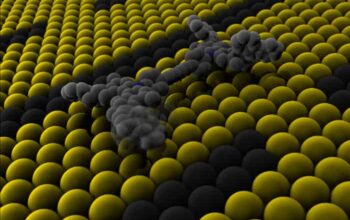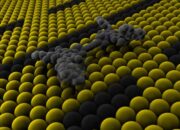In the rapidly evolving landscape of technology and computation, quantum computers stand as a beacon of possibility. Their potential to revolutionize various fields, ranging from cryptography to drug discovery, stems from the uniquely enigmatic principles of quantum mechanics. Understanding the source of the power of quantum computers requires delving into this intricate interplay of physical phenomena, which can be likened to deciphering the complex dance between particles in the quantum realm.
At the heart of quantum computing’s prowess lies the concept of quantum bits, or qubits. Unlike classical bits, which unequivocally exist as either a 0 or a 1, qubits exhibit a remarkable trait known as superposition. When this phenomenon is illustrated through the metaphor of a spinning coin, one can envision the coin being both heads and tails simultaneously until it lands. Similarly, qubits can exist in multiple states at once, enabling quantum computers to perform calculations at an unprecedented scale. This property exponentially increases the computational capacity, allowing for the exploration of solution spaces that classical computers would find insurmountable.
Moreover, it is not merely the existence of superposition that bestows power upon quantum computers, but also the phenomenon of entanglement. Entanglement occurs when pairs or groups of qubits become intertwined in such a manner that the state of one qubit instantaneously influences the state of another, irrespective of the spatial distance between them. This phenomenon can be visualized through the metaphor of a pair of intertwined dancers: even if they are geographically separated, the movements of one dancer elicit an immediate response from the other. This attribute facilitates enhanced communication and coordination among qubits, creating complex networks that classical devices cannot replicate.
To further appreciate the source of quantum computational strength, one must also consider coherence. Coherence is akin to the harmony of a symphony orchestra, where all instruments must align to produce a melodious output. In the quantum context, coherence refers to the maintenance of the quantum state over time. It is essential for both superposition and entanglement, as it allows qubits to function collectively and perform calculations. However, coherence is fragile and can be disrupted by environmental interference, a challenge that researchers must surmount to harness the full potential of quantum systems.
The computational advantage of quantum computers emerges when exploiting the aforementioned properties—superposition, entanglement, and coherence—through specialized algorithms. An example of such an algorithm is Shor’s algorithm, which demonstrates the potential for efficiently factoring large integers, a task that poses significant challenges for classical algorithms. This capability has far-reaching implications for cryptography, suggesting a seismic shift in how data security is managed in the digital age. The prospect of quantum supremacy, the point at which quantum computers outperform their classical counterparts, further emphasizes the transformative possibilities ushered in by this technology.
Moreover, the unique appeal of quantum computing does not solely reside in raw computational power. It also lies in its ability to tackle complex problems that are presently intractable. Consider the task of simulating molecular interactions in drug discovery. Quantum computers can model these interactions with unparalleled accuracy by leveraging quantum states, enabling researchers to identify effective compounds much faster than traditional methods. This capability can lead not only to significant advancements in medicine but also to breakthroughs in materials science and energy solutions.
In the quest for a deeper understanding of quantum computing, one must also address the challenges that lie ahead. The journey toward practical quantum computing is fraught with obstacles such as error rates, qubit scalability, and the eradication of decoherence. Quantum error correction, a developing field, seeks to mitigate the impact of errors inherent in quantum systems. This endeavor involves encoding quantum information in such a way that it can withstand interference, much like a message transmitted through a noisy channel yet still comprehensible to the receiver.
Efforts to build scalable quantum architectures, such as superconducting qubits, trapped ions, and topological qubits, exemplify the extensive research underway to realize robust quantum systems. Each technology presents its own set of advantages and limitations, heralding a new era of innovation in computing. The race to establish stable, large-scale quantum computers is reminiscent of the early days of classical computing, where pioneers faced immense hurdles before achieving breakthroughs that shaped the modern world.
As we venture further into the age where quantum computing transitions from theoretical exploration to practical application, society’s understanding and engagement with this paradigm shift will be crucial. The potential benefits, from solving complex optimization problems to enhancing artificial intelligence methodologies, resonate with a sense of urgency and excitement. The narrative of quantum computing is still being written, with each development adding chapters filled with promise and challenges alike.
In conclusion, the source of the power of quantum computers emerges from the beautifully intertwined phenomena of superposition, entanglement, coherence, and algorithmic innovation. As these principles coalesce into tangible applications, we stand on the precipice of a transformation that could redefine computation as we know it. This journey into the quantum realm is not merely a scientific endeavor; it is a pursuit of understanding the very fabric of reality itself, reflecting humanity’s timeless quest for knowledge and innovation.










